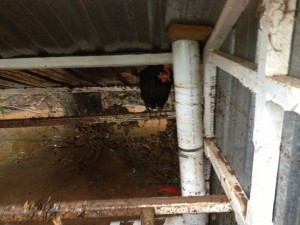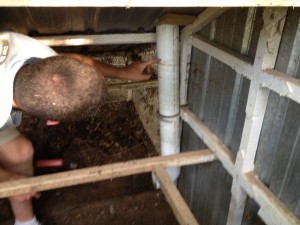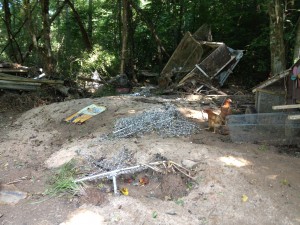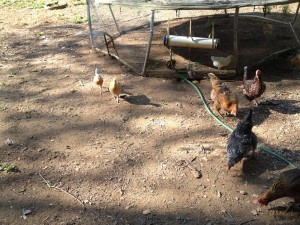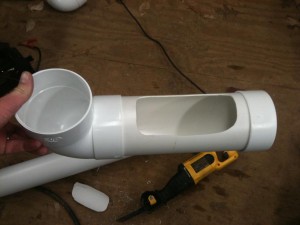In the summer of 2013, things were going fairly well for our chicken operation. We had around 20 hens laying, one rooster, and even a couple of silkies just for fun. We had two 6×8 foot houses connected by a hardware-cloth tunnel, and an automatic door to their fenced yard. We used three lengths of Premier One netting, which made for a pretty large yard. The area where we kept the chickens was known to flood from time to time. Here’s a picture of a flood like the ones that we saw once or twice per year.
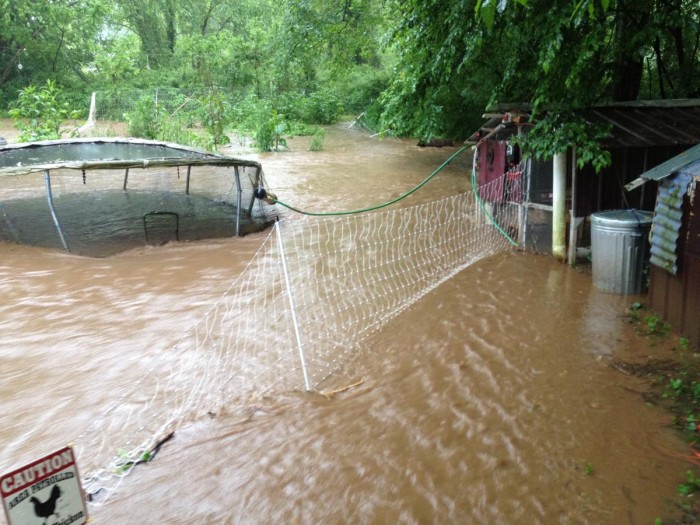
These floods were just an inconvenience, requiring us to change out the bedding and rearrange the trampolines. Skip ahead to late July 2013, when I woke up just after daybreak one rainy morning, with plans to hop in the already-packed car and leave town for a week. I looked out the window to see that the creek in our driveway was already about 12 feet over its usual height, with water up to the road level of our driveway bridge. This was much higher than we had ever seen before, but not as high as it had ever been, according to the old timers. It was clear that my travel plans were going to be delayed. I put on rain gear and went down to check on the chickens. All of their yard was under water, and one of their houses was mostly submerged too. The rain was still coming down very hard, and the water was rising. By around 9:00am the water level was higher than anyone had ever seen it before. Our driveway bridge washed away, with most of the wood decking floating in one piece through the yard like a big raft, collecting much of the chicken fence with it. Here is a picture of the yard from after the water level had dropped several feet.
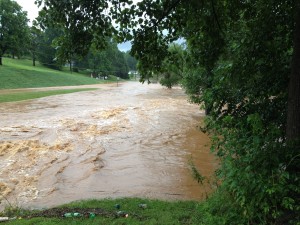
The house that sat higher on the hill had water up to nearly the top.
The house that sat a few feet lower was balled up in the woods.
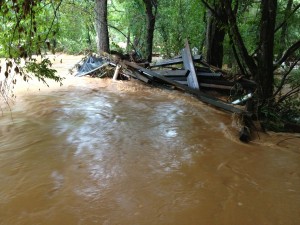
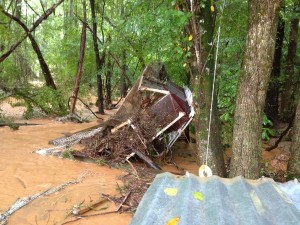
There weren’t any chickens around anywhere that I could see, and I figured they were probably all lost. A few hours later the water finally started to recede, after nearly submerging our mailboxes. I opened the remaining house to find one live bird and two dead ones. Others started coming out of the woods, not unlike the munchkins in the first Oz scenes in the Wizard of Oz movie. I saw a few familiar faces. In the end we lost about half of our flock, which was just as well, since we didn’t have room to house the other half anyway. When I got back from the week-long trip we were able to begin the cleanup. The fence was badly tangled in bridge timbers and all sorts of other trash. One length of fencing took the most stress, but all three were still usable eventually. The more damaged length required a few pole replacements and some splicing. The other two lengths were usable with minor adjustments. The Patriot fence charger still worked after having been submerged, and we soon had the chickens back in operation with a single house and a protected run. We only found a few dead ones, so I like to hope that some of our girls are living it up in South Carolina after having quite a swim.
 Happy Egg Farm
Happy Egg Farm
